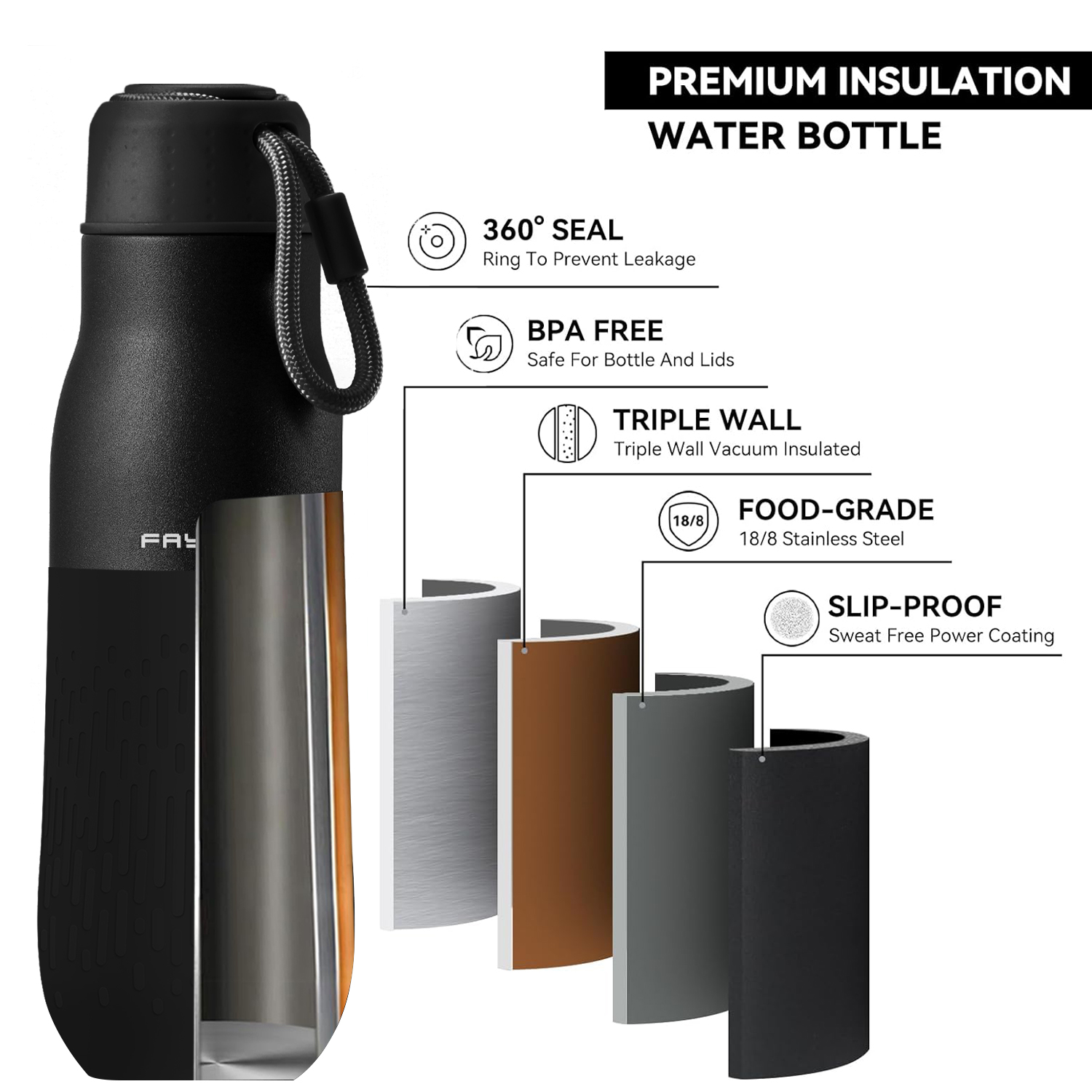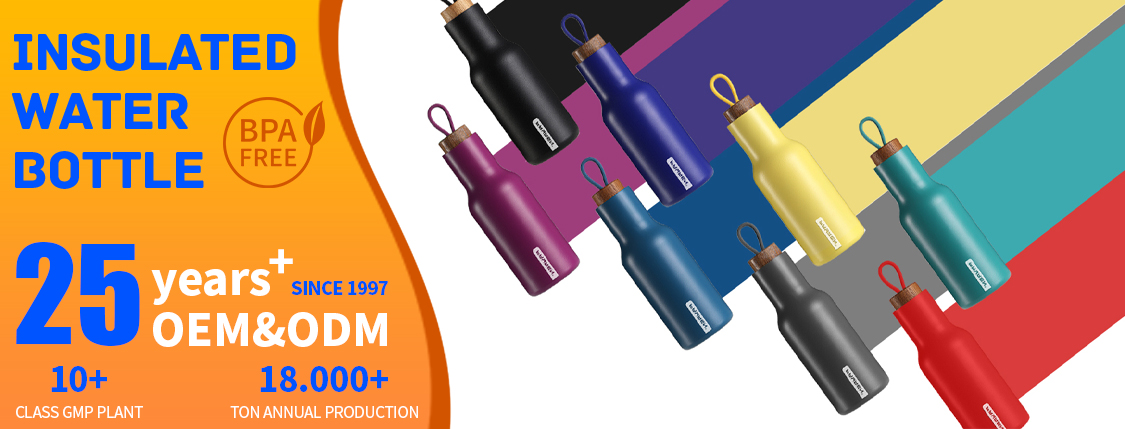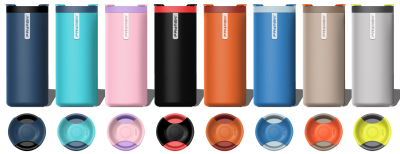
Beware of "Deadly" Thermos: How to Choose and Use Thermos
2025-09-20 18:35
Beware of "Deadly" Thermos: How to Choose and Use Thermos
Many people enjoy drinking hot or warm water, and carrying a stainess steel vacuum bottle with them whenever they go out is a common habit.
However, with countless thermoses available on the market, purchasing a low-quality one could pose health risks.
Indeed, a low-quality stainless steel water bottle can turn hot water into "toxic water," and improper use can also pose health risks or safety hazards.

✅What Type of vacuum bottle is "Toxic"?
The Key Depth Depth of the Liner Material
The core safety hazard of steel bottle comes from the leaching of heavy metals from the liner.
Absolutely Avoid: 201 Stainless Steel
Application: This is industrial-grade stainless steel, primarily used for decorative pipes and industrial products.
Risks: High manganese content and poor corrosion resistance. When acidic beverages (such as juice or coffee) are added,
heavy metals (such as manganese) are easily leached.
Long-term excessive intake of manganese can seriously damage the nervous system.
Many of the substandard products exposed in the news are of this type.
Recommended: 304 Stainless Steel (Food Grade)

Application: Food-grade stainless steel, recognized by national standards,
offers excellent corrosion resistance and is the most commonly used and safe liner material for thermoses.
Labeling: The inner liner will typically be embossed or laser-engraved with "304," "SUS304," or "18/8."
Caution: Be wary of unscrupulous sellers who may try to pass off 201 stainless steel as 304.
Preferable Choice: 316 Stainless Steel (Medical Grade)
Application: 316 stainless steel, with the addition of molybdenum,
offers enhanced corrosion resistance and high-temperature resistance,
as well as more stable performance. It is commonly used in the medical, chemical, and other fields.
Labeling: The inner liner will be labeled "316" or "SUS316."
Recommendation: For those who demand high quality or frequently brew tea or coffee,
choose a 316 stainless steel thermos.
✅How to Choose a Safe stainless steel insulated ? (6 Key Points)
Remember these 6 points to avoid pitfalls:
1.Check the Labeling: This is the first step! Always check the bottom of the inner liner for "304" or "316."
Avoid products without or with unclear markings.
2.Smell: Open the lid and take a whiff. Qualified products should be made of food-grade materials and should be free of odor, plastic, or metallic tastes.
3.Touch the texture: The inner container should be mirror-smooth (electrolytically processed), with no burrs on the rim and no scratches or bumps.
4.Check the accessories: Components that come into direct contact with liquid, such as seals and straws,
must be made of food-grade silicone, soft and odorless.
5.Choose a channel: Purchase products from reputable brands through reputable channels (such as brand counters and official flagship stores)
to avoid "three-no" products.
✅"Five Dos and Don'ts" for Thermos
Even the best thermos can be dangerous if you put the wrong contents in it!
1.Avoid milk and soy milk: High-protein drinks can quickly breed bacteria in a heat-insulating environment, causing spoilage and diarrhea.
This also destroys nutrients.
2.Avoid brewing tea: Prolonged, high-temperature steeping destroys the tea's vitamins, causing it to turn yellow and astringent,
and release excessive amounts of caffeine, which increases harmful substances.
3.Avoid using traditional Chinese medicine: The acidic substances in traditional Chinese medicines can easily react chemically with the inner container,
potentially releasing heavy metals, affecting their efficacy and potentially harming your health.
4.Avoid using puffed tamarind or red dates: These ingredients ferment and produce gas, which can cause a sharp increase in pressure within the container.
This can easily cause "gushing" when the lid is opened, potentially causing an explosion.
5.Avoid carbonated beverages and fruit juice: Acidic substances can corrode the inner container and accelerate the release of heavy metals.
Carbonated beverages also produce gas, increasing pressure within the container and posing a safety hazard.
Summary:

The keys to safe thermos use are: identifying food-grade 304/316 inner containers, purchasing from reputable sources,
only using plain water or light tea, and cleaning and disinfecting them regularly.
Immediately check the label on your water bottle stainless steel' inner container.
If it says "201" or has no label at all, replace it as soon as possible for your health.
👉 [SHOP THE Fayren tumbler SERIES COLLECTION NOW]
Contact Fayren TODAY to:
✅ Request your FREE samples
✅ Discuss custom branding options
✅ Get access to high-res marketing videos & images
✅ Secure competitive wholesale pricing
✅ Lock in your initial order & stock this bestseller!
Act Now & Be the First to Offer the Ultimate Travel Tumbler!
Contact Us:
📧 Email: sales22@fayren.com
📱 WhatsApp:+8613925056186
📞 Phone:+8613925056186
Get the latest price? We'll respond as soon as possible(within 12 hours)












